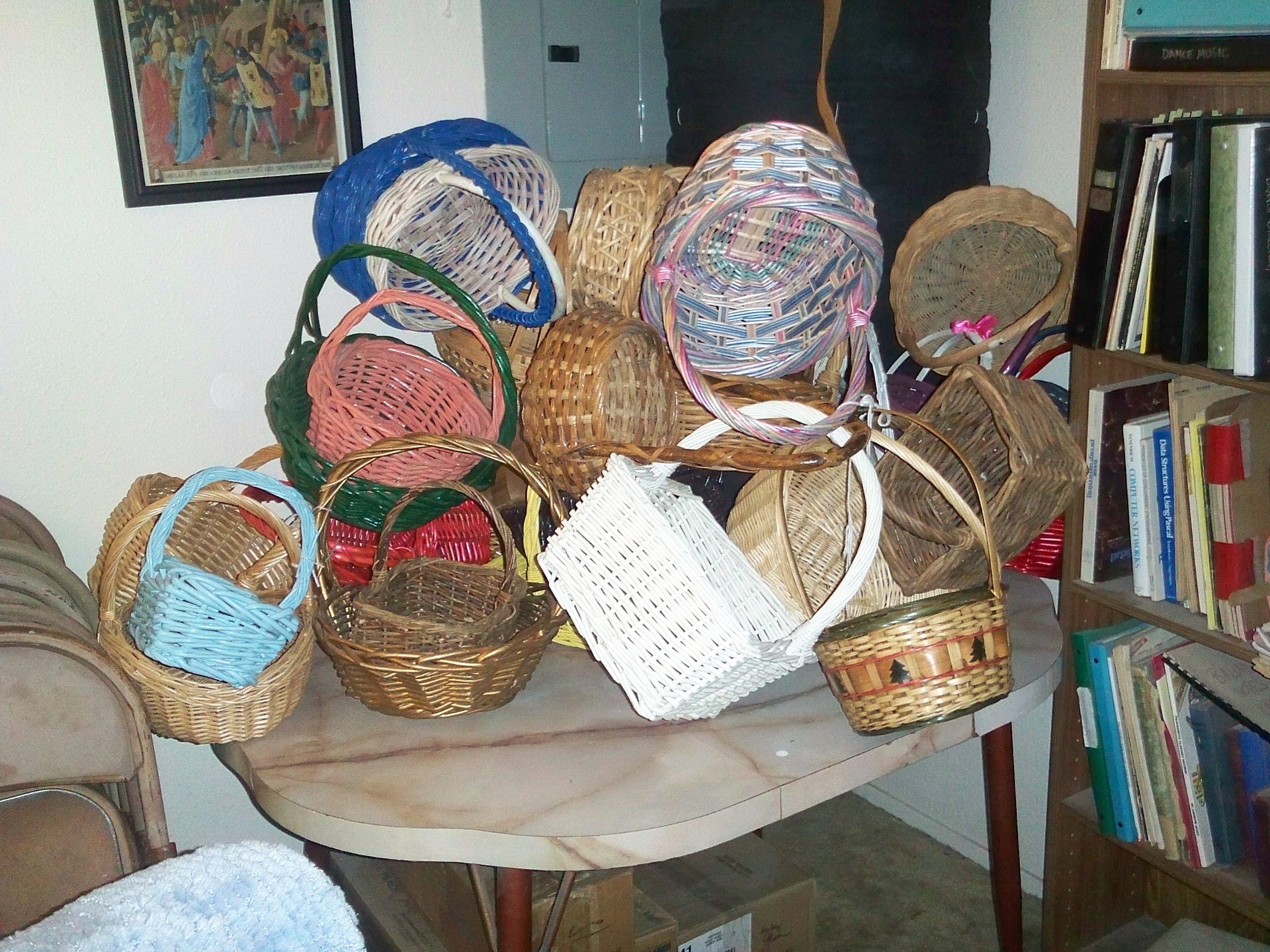some suggestions for where to look, and what to look for
by Sandra Dodd, years ago
First the scare stories: It is possible to pay $4 for a plastic bag containing fifty plastic American pennies. We bought the 30 plastic fifty cent pieces instead. It seemed like a better deal. (I know it's stupid, but we still have most of them and sometimes they get played with.) Real money can be bought for face value (or sometimes very young children will sell you two dimes for a nickle, but it's best to slip them back later).
There are educational games that are wonderful, glorious, and cost $30 and more. Go to stores, look in catalogs, familiarize yourself with them, and then hit the thrift stores, garage sales, or the flea market. You might find the same games for $2 and if they don't have all the parts, wait for another one for $2 and combine them. We have found some wonderful games at thrift stores. We have one out of print game called "Pilgrimage" about going from London to Jerusalem in the Middle Ages, the game board for which is a map of Europe and the Mediteranean. We bought "Scotland Yard" for $3, the Ravensburg version. We found a German dice box with various sorts of dice and a booklet, all in German, with details of lots of games.
One of our best math tools is a revolving holder full of poker chips. Babies discovered and continued stacking-patterns started by a parent or sibling. They were counted, stacked, rolled, spun and thrown. Older kids use them as coins in adventure games, or try to make patterns too hard for parents to guess.
On good days the search is the best part. Our puppet collection was built on two puppets, both from thrift stores. Now we have ten or so, all kinds, from at least five different countries. When puppet shows come on TV or articles on marionettes come by, we perk up. While scanning for the things you are needing or collecting, though, marvelous surprises can surface. What conversations can follow the purchase of a cutwork or pulled-thread handerchief or napkin? A handwrought aluminum wall plate from the 50's might have been ho-hum then, but might inspire your 90's 21st century children to many hours of play with aluminum foil or wood or a thin sheet of scrap metal and a hammer. 
Used Easter baskets will be on sale everywhere in the Spring for nearly nothing. We have used ours for birdfeeders, storing doll clothes, storing kindling (eventually just burn the basket), rinsing toy dishes outside (water runs out), for hanging plants, or storing socks, caps or hair scrunchies on tops of dressers. While you have those baskets, see if you can look at where they're from, how they're made, and of what material. When weaving pictures or examples of basketry come by, point that out to your children (or just appreciate them yourself).
Costumes! Other people's used clothes or cast-off souvenirs can form the basis for your own historical or multi-cultural costume collections.
Dishes, vases, jars and canisters—a collection of antique (or just funky) international art could become your hostess collection, your storage system, your in-home museum!
Learning is everywhere. The five dollars that will buy nothing but plastic pennies or pencils at some stores will buy a sackful of treasures other places.
at a place where the rooms had fireplaces, in 2010.
Gifts for Guys to Buy